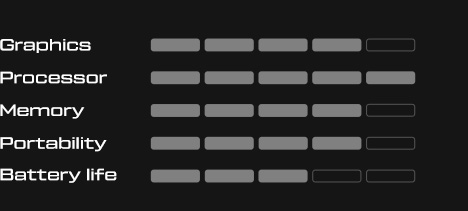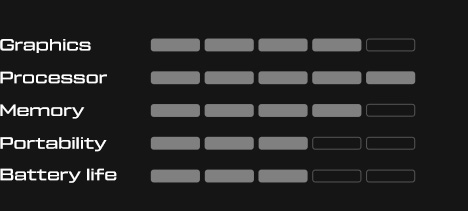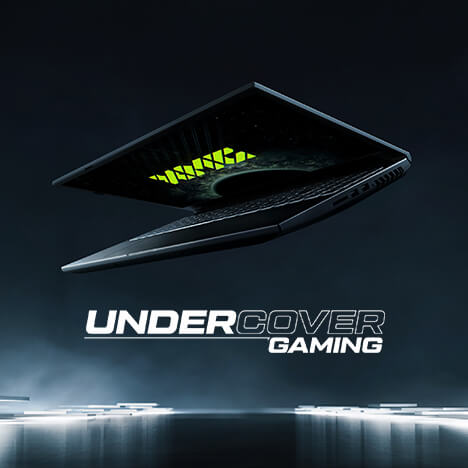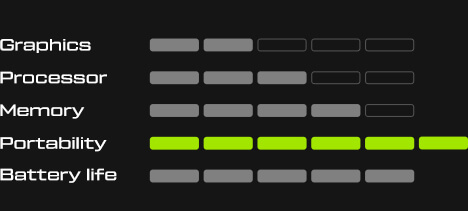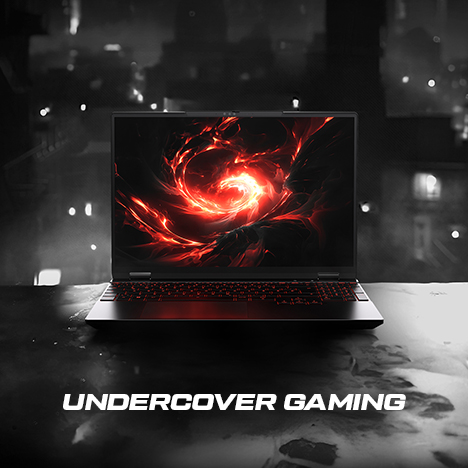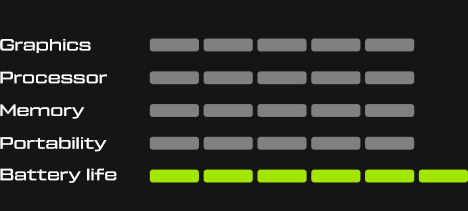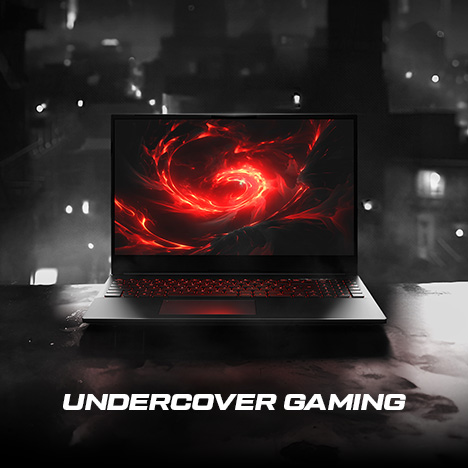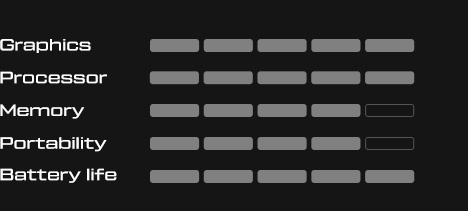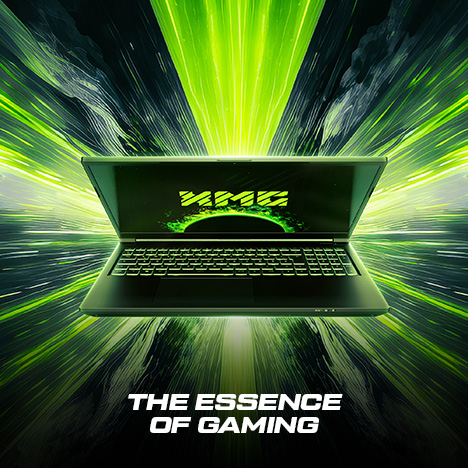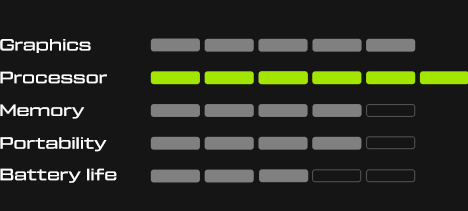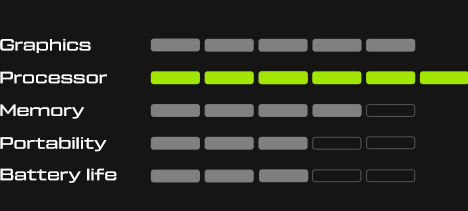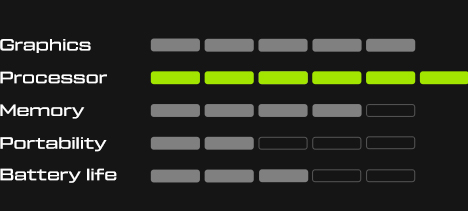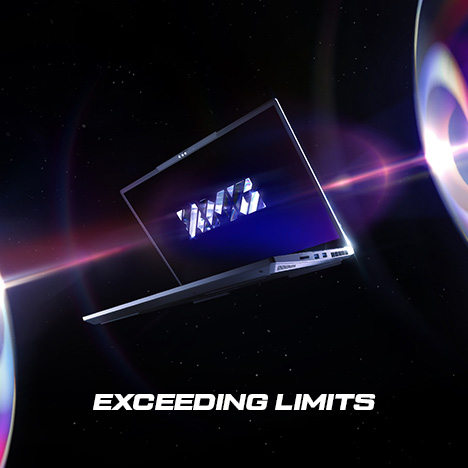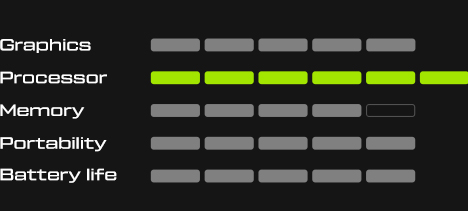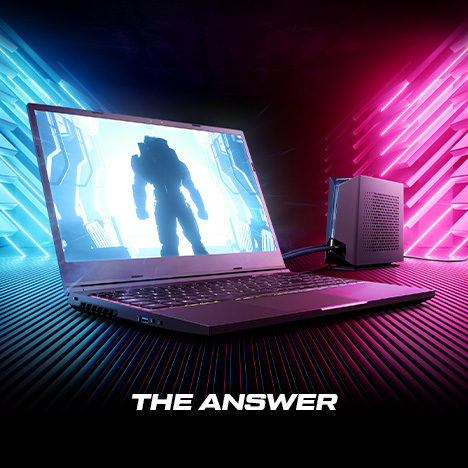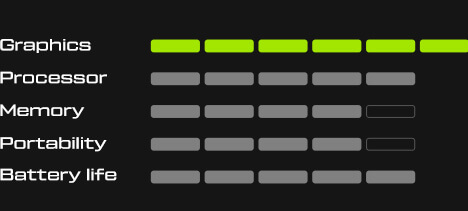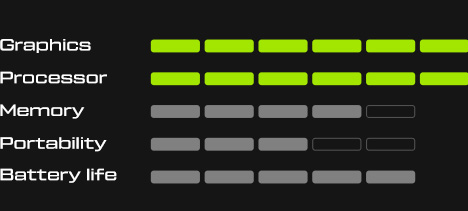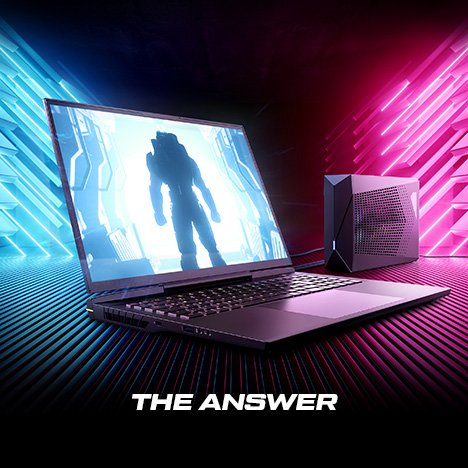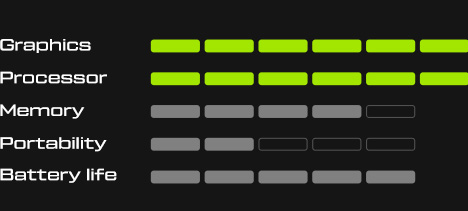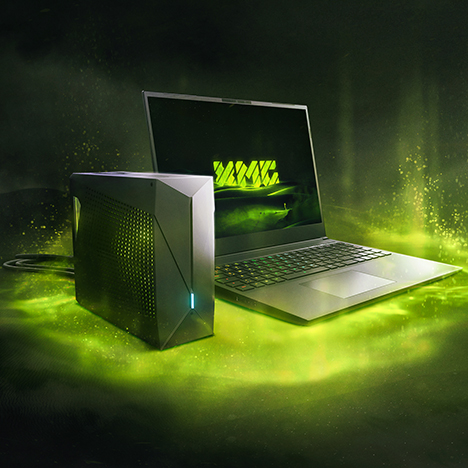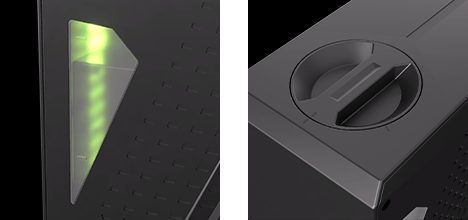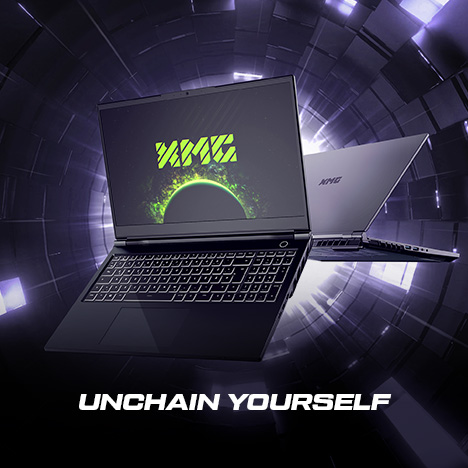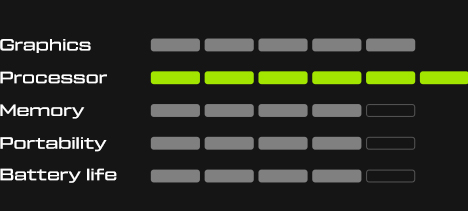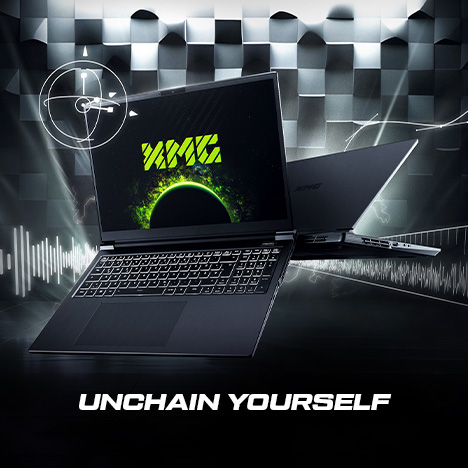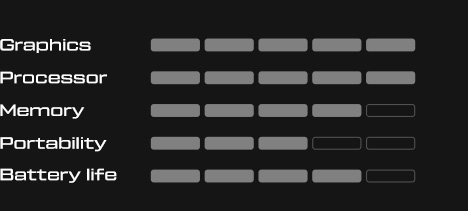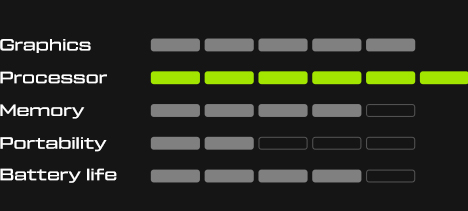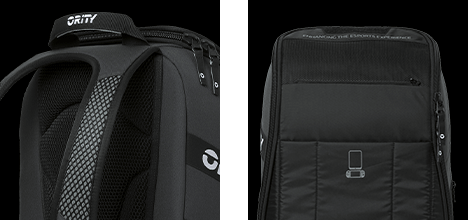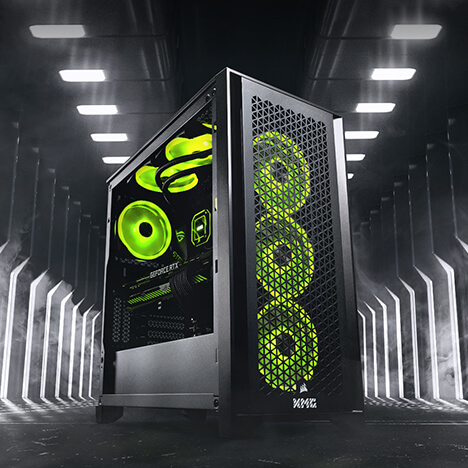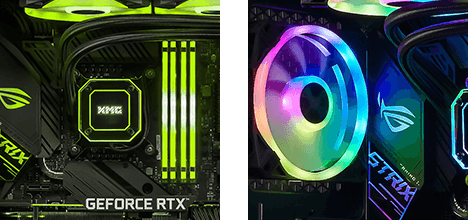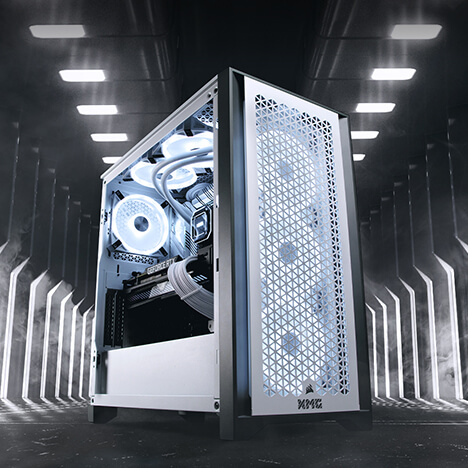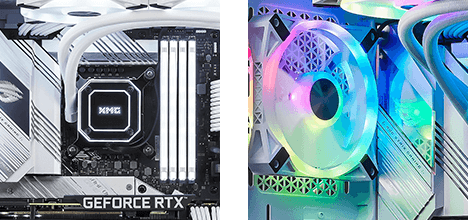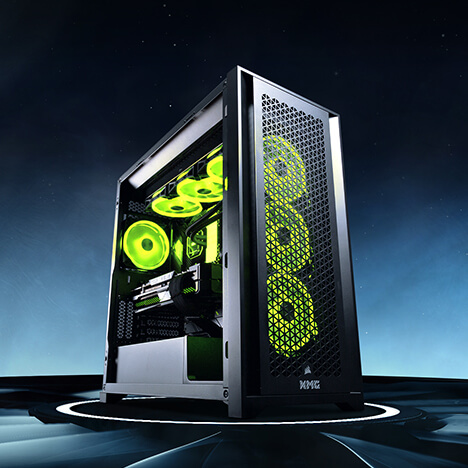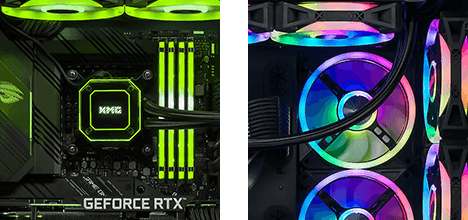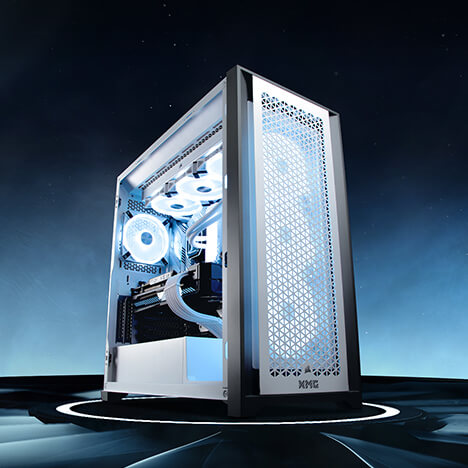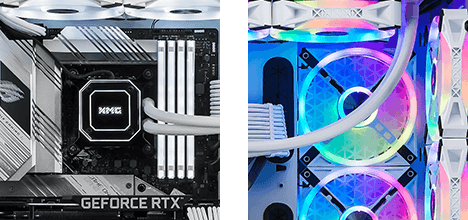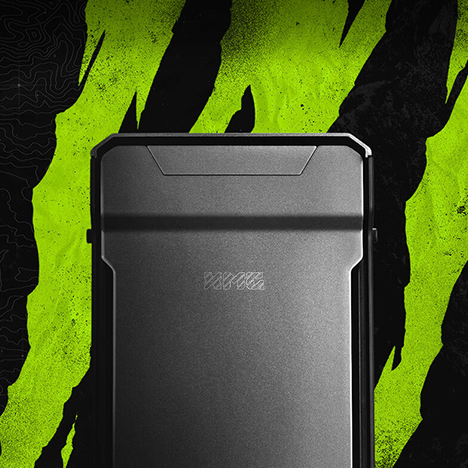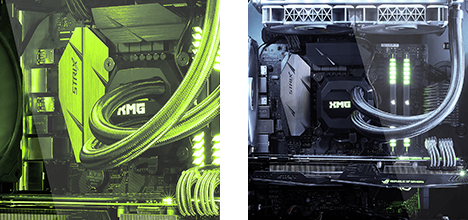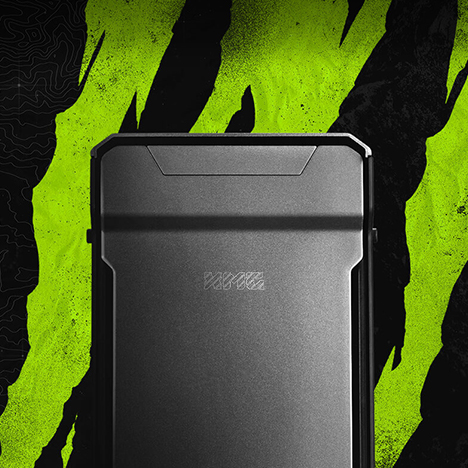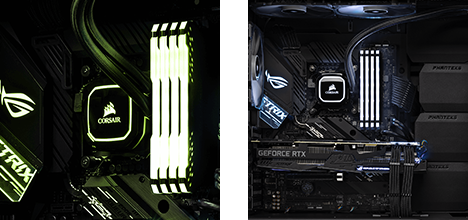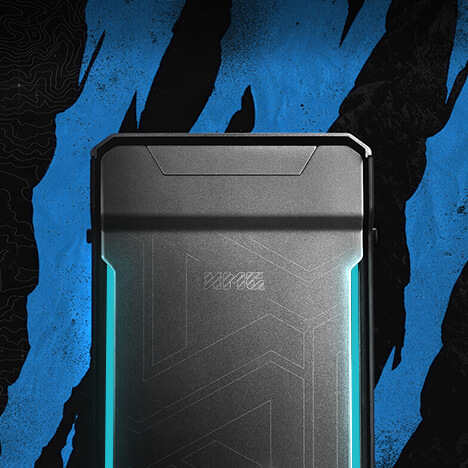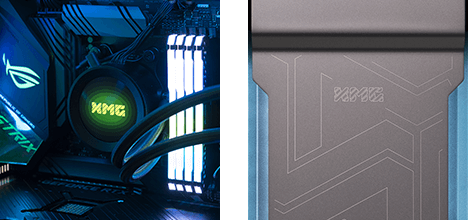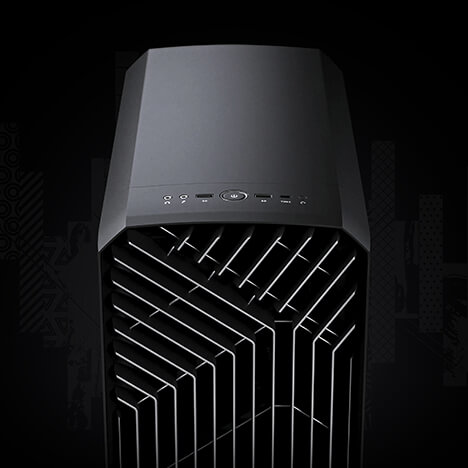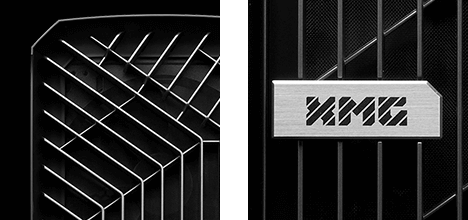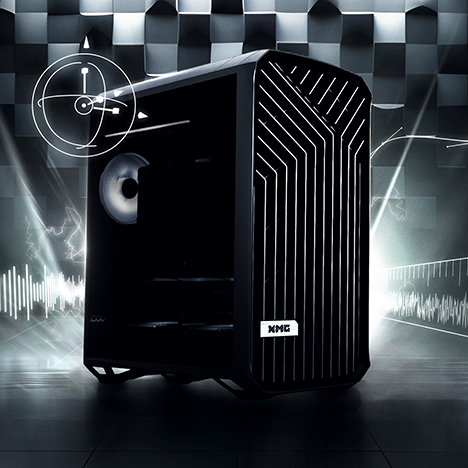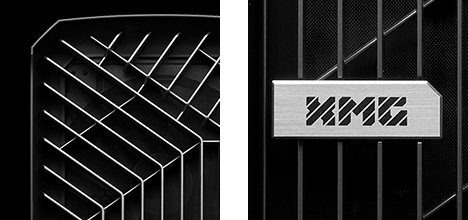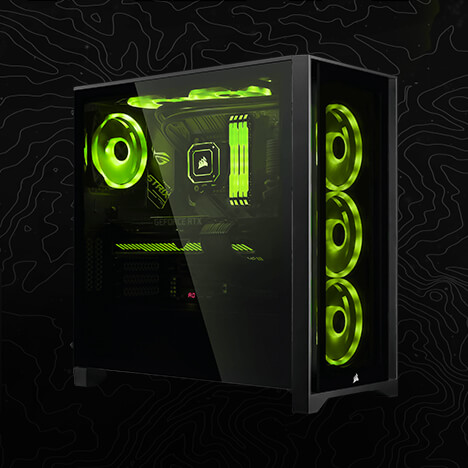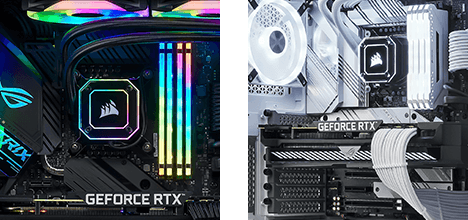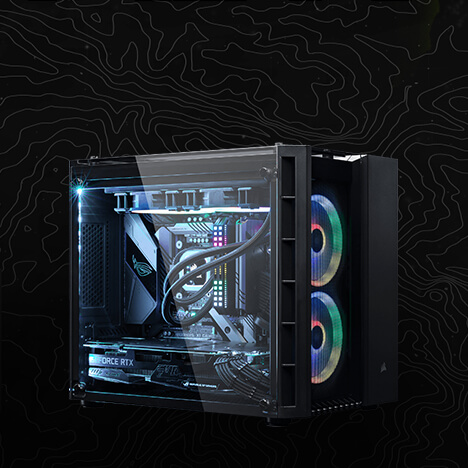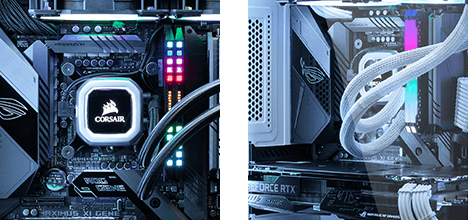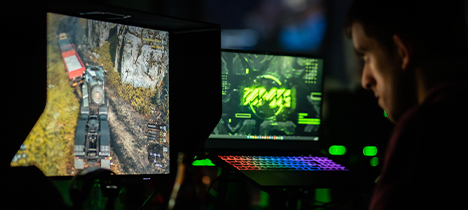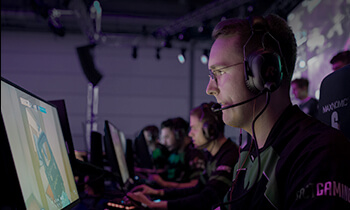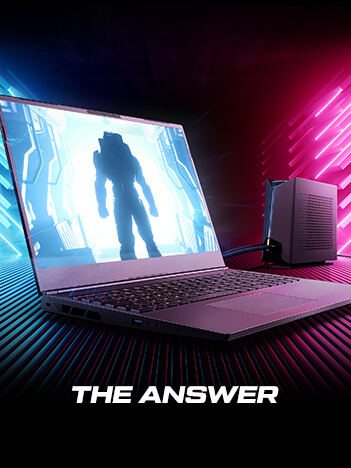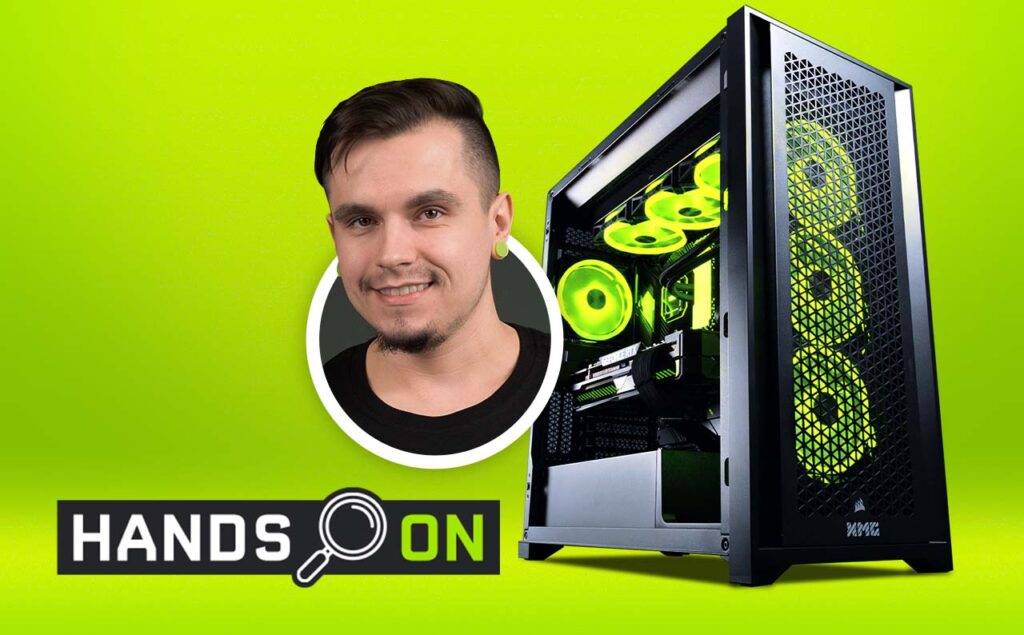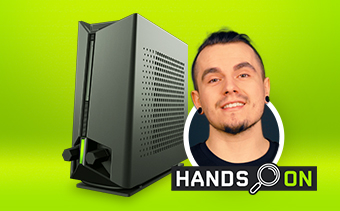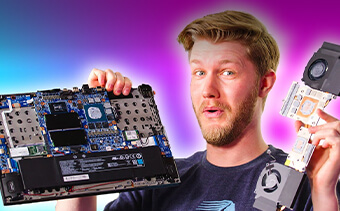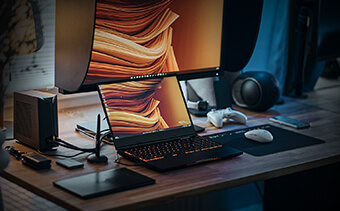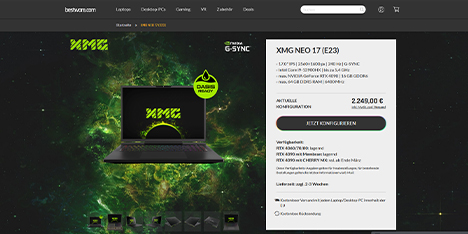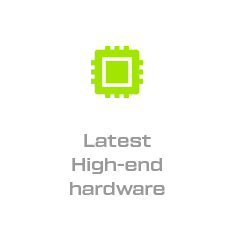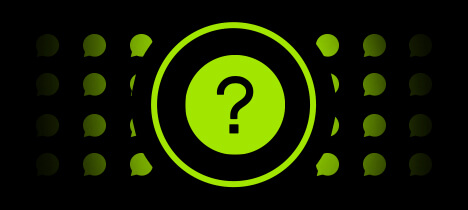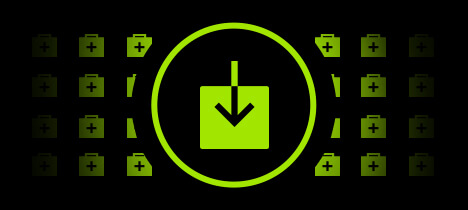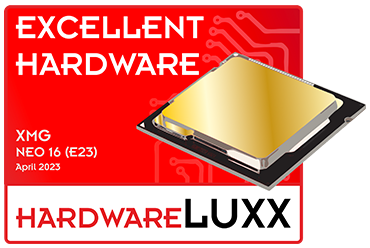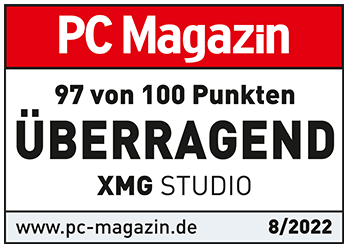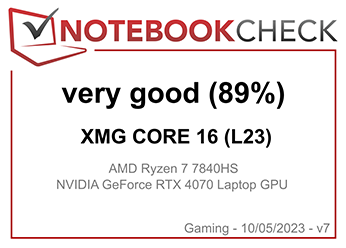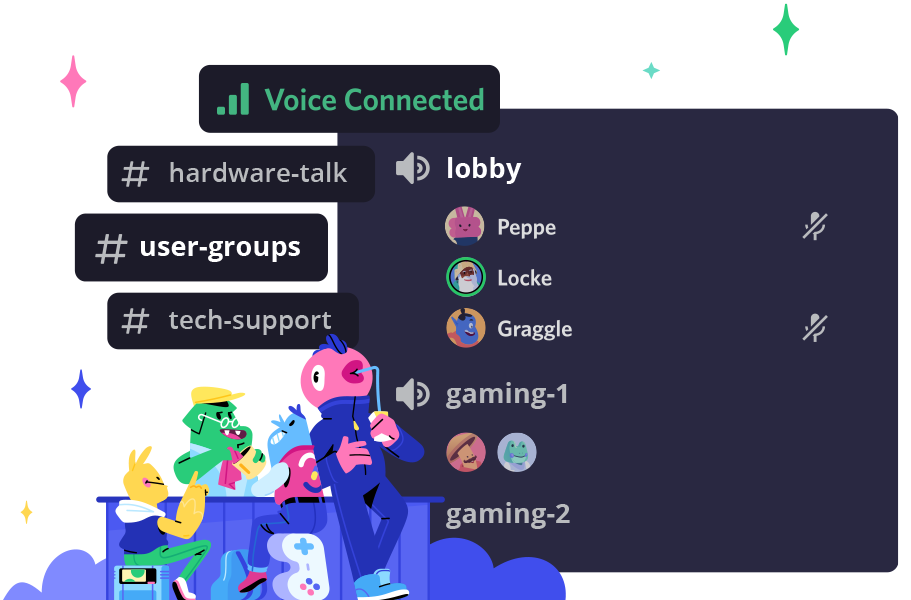- Deep Dive
This article provides an overview of DPC latencies, which are crucial in audio applications: What defines good audio laptops for music production? It also goes into the use of XMG and SCHENKER laptops as workstations for real-time audio and video applications. This includes specific recommendations as to which models are particularly suitable in our opinion and which tips can be used to maintain good DPC latency values in everyday practice. Last but not least, we link to a new survey in which we ask you for your experiences.
Table of contents
- Introduction
- Who is affected by DPC latencies, who is not?
- Overview table and product recommendations
- Reliability of the measured values / interpretation of the recommendations
- Disclaimer: Recommendations are not a guarantee
- Currently recommended laptop models for real-time audio/video
- General tips for good DPC latencies
- Advanced tips and Modern Standby
- Survey (experiences and testimonials)
- Your feedback
Introduction: What is DPC latency?
DPC stands for “Deferred Procedure Call” and refers to the time it takes an operating system to complete certain driver tasks. In audio production, high DPC latency can lead to audio dropouts and delays.
Why is it difficult to provide good DPC latencies in any laptop?
We would like to shed light on this question using the following points:
- Modern Standby and power management: The introduction of Modern Standby has limited the options for fine-tuning system performance that were previously available through the BIOS and Windows power settings. Hardware, firmware and operating systems now switch operating states much more frequently and fully automatically to save power. Inactive components are put into short-term sleep states on a granular basis without the user noticing or being able to influence this (see FAQ article: Problems with Standby). The constant change of operating states under low or mixed load can lead to short-term spikes in DPC latencies.
- Software interactions: Driver updates and third-party software running in the background can lead to increased DPC latencies. Network and security software solutions often bring their own drivers for virtual devices, which also compete for DPC resources.
- Compatibility and prioritisation: The constant further development of hardware and ever-increasing security demands require continuous adaptations on the levels of firmware, drivers and operating system – nevertheless, software should also always be as backward compatible as possible. In this complex interaction of the most diverse players, secondary aspects such as DPC latencies can sometimes fall by the wayside.
- Diversity of use cases: The different requirements and configurations of the users make it difficult to find a universal solution.
Overall, optimising DPC latency is a complex task that requires close coordination of hardware and software. It is an ongoing process that requires constant improvements. Since the introduction of Modern Standby, we have hardly any active design options for adjusting the energy-saving profiles, so we are essentially dependent here on improvements emanating from the platform providers such as Intel and AMD and their ecosystem partners.
To what extent do laptops for audio and desktop PCs differ in DPC latencies?
In desktop systems, optimising DPC latencies is less complex than in laptops, mainly due to two factors.
Firstly, desktop PCs do not (yet) use the “Modern Standby” paradigm, the effects of which on DPC latencies were explained in the previous paragraph. Also, the usual APCI calls via Fn hotkeys, such as controlling performance profiles and keyboard illumination, are not present in desktop PCs.
Secondly, laptops use a hybrid graphics solution where the CPU vendor’s integrated GPU is responsible for rendering Windows and the dedicated graphics card is usually kept off. Thus, the dedicated graphics card (such as NVIDIA GeForce RTX) can be largely excluded as a factor in optimising DPC latencies in laptops.
Thanks to the high customisability of desktop platforms in terms of component selection and power management, we are able to provide two desktop systems fully optimised for real-time audio:
With current desktop graphics cards from NVIDIA, we have found that the professional NVIDIA graphics cards (“RTX” without “GeForce”, formerly “Quadro”) seem to enable better DPC values than the GeForce cards. Details on this can be found in the FAQ of our audio-optimised desktop PCs:
Since the NVIDIA graphics card can be switched off on laptops and is generally not needed for real-time audio applications, this factor is less important in our laptop recommendations.
Who is affected by DPC latencies, who is not?
Who is affected?
DPC latency is especially important for professional audio users. This includes sound engineers, music producers and DJs who rely on extremely low latency to ensure real-time audio processing and playback without interruptions or delays. DPC latency can also be critical in specialised applications such as live audio mixes or post-production.
Who is not affected?
For the average laptop user performing everyday tasks such as web browsing, word processing or watching videos, DPC latency is usually not a critical element. Even for casual gamers and content creators who do not rely on real-time audio processing, DPC latency is usually not a major concern.
In short, those who don’t use their laptops for specialised audio work or extremely latency-sensitive applications don’t have to worry about DPC latencies.
Overview and product recommendations: Which of our notebooks are suitable as audio laptops?
All important information is summarised in this continuously updated table:
This link provides an overview of the DPC latencies of all current XMG and SCHENKER laptops and shows which models are suitable as audio notebooks. The table identifies the laptop generations via the year numbers and product IDs, along with their CPU and GPU series.
The column “Our recommendation” lists models that we explicitly recommend for real-time audio users. The test protocols of these models can be viewed via further tabs above the table. An interpretation guide for these recommendations follows below.
For models marked “n/a” in this column, either no measurements are available yet or they do not meet the requirements of a laptop for professional real-time audio applications.
In addition to our own recommendations, we also document in the table the recommendations of Notebookcheck, which performs a standardised test procedure for DPC latencies on many of our laptop models.
Reliability of the measured values / interpretation of the recommendations
The measured values and recommendations from Notebookcheck in the table only serve as a rough comparison. The specification of DPC latencies can be roughly divided into two categories:
- Some background noise – i.e. the average value when the system is idle.
- Occasional peaks, sometimes far above the background noise – these can occur either during certain actions (e.g. when disconnecting the power supply), when changing energy states (see Modern Standby) or purely randomly in temporally large or small intervals.
Notebookcheck’s measurements refer to a fairly short period of less than 5 minutes of different usage (4K video playback, benchmarks, idle). If a device scores well during this period, that’s not bad. However, it is no guarantee that DPC latency peaks will not occur at longer intervals.
Our criteria: when do we recommend a laptop for real-time audio/video and music production?
As can be seen from the test protocols in the other tabs of our table, we perform more extensive tests compared to Notebookcheck, including an hour of idle, longer CPU and GPU stress tests and testing of various input and Fn key actions. This gives us a more detailed picture of the DPC latency values over longer periods and under different conditions.
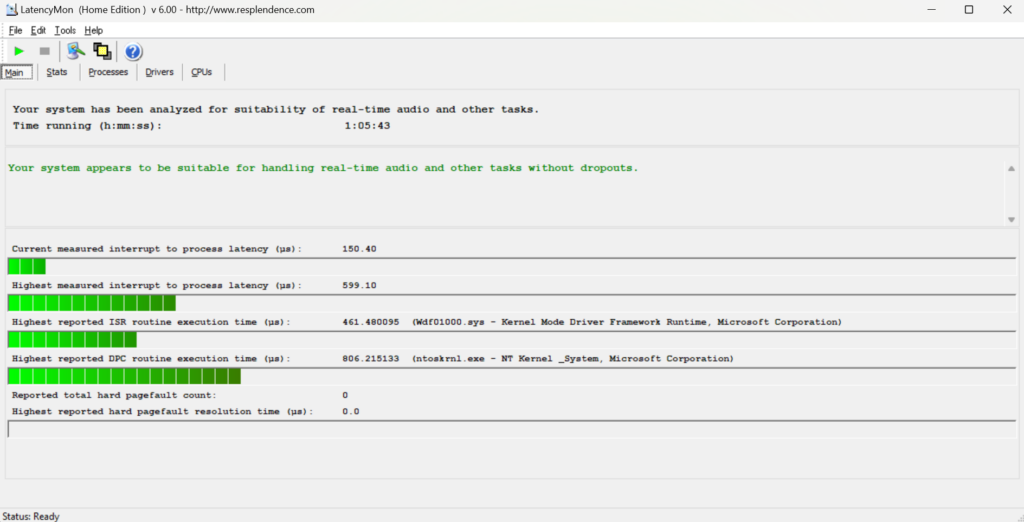
Even if a model should show minor latency spikes in some tests (marked as “BLACK NOTICE” or “RED NOTICE” in the table), we think it is important to understand the context of these spikes. For example, minor and infrequent spikes could occur during intense GPU stress testing, but should not affect real-time audio use. Also, brief spikes during certain input/output actions (changing the performance profile, disconnecting the power supply) are not an exclusion criterion for our laptop recommendation, as such actions can be specifically avoided in productive use.
Therefore, our tests provide a nuanced assessment that allows us to recommend specific models for specific use cases.
Distinction between desktop and laptop recommendations for audio
We would like to point out once again that our desktop PCs, which are optimised for real time audio, are subject to stricter criteria than laptops. This includes, among other things, test periods of 24 hours and a lower fault tolerance for GPU and gaming benchmarks. At the same time, desktop PCs are not affected by the usual DPC pitfalls of laptops (modern standby, performance profiles, ACPI calls via Fn hotkeys), which eliminates these tests for desktop PCs.
Disclaimer: Recommendations are not a guarantee
Our recommendations are based on extensive testing and analysis that we perform in order to test various models for the most stable DPC latencies possible for real-time audio and video applications.
The following applies to the laptops for audio recommended here: These recommendations do not constitute a formal guarantee promise.
Every production environment is unique and can be affected by a variety of factors outside of our control. These include software compatibility, peripherals and even the specific requirements of a project. Therefore, in rare cases, even a recommended model may not be a 100% match for individual requirements.
For this reason, we offer a 14-day “money back” guarantee as part of the statutory withdrawal period, starting from the day you receive the laptop.
We therefore strongly recommend that interested users thoroughly test their complete audio/video production setup, including all peripherals and professional software, during this period so that the withdrawal period can be observed if they are not satisfied.
Further information on this can be found here:
Currently recommended laptops for audio and music production with low DPC latencies
We can currently recommend laptops from the XMG APEX series (L23) and the XMG CORE series (L23) as audio laptops.
This two series are combined because they are based on the same mainboard (with different GPUs on offer), use the same firmware and do not differ except for keyboard, display and chassis. The recommendation explicitly refers only to the L23 variant with AMD Ryzen 7040 series (codename “Phoenix”), not to the otherwise largely identical M23 series with Ryzen 7030 (codename “Rembrandt+”). The reason for this lies in structural improvements that have occurred in the CPU, chipset or firmware architecture at AMD.
A summary of our test protocol can be found in the summary table linked above.
Configure now: XMG APEX 15 (L23)Configure now: XMG APEX 17 (L23)
Configure now: XMG CORE 16 (L23)
General tips for good DPC latencies
Disclaimer: The following tips apply to laptop models that are already certified to have good DPC latency values out-of-the-box. Coversely, models that tend to spike frequently (perhaps even in idle) probably cannot be tamed effectively with these tips – although if you already own such a laptop and it meets your requirements apart from DPC problems, you may still have a chance to improve your results with some of these tips.
Our tips
- Avoid unnecessary system software: Do not install unnecessary system tools such as tuning programmes or additional security, firewall, network or VPN software (see FAQ: What tuning and system software does XMG recommend?).
- Clean up autostart: Remove unnecessary software from the automatic system start to speed up the boot process, conserve system resources and eliminate possible causes of high DPC latencies (see FAQ: How can I prevent certain software from starting automatically with Windows?).
- Leave NVIDIA graphics card in sleep mode: Make sure that your dedicated GPU is not disturbed in its sleep mode. Such disturbances can happen when background software keeps the GPU awake (e.g. “Epic Gamer Launcher”) or when productivity apps use the GPU unnecessarily for add-ons, effects or to draw their windows (see FAQ: Problems with battery life, idle power consumption, or relatively high fan noise despite low load – there chapter “Why won’t my GPU go to sleep?” and following). The only exceptions are if you actually need the dedicated GPU for graphics-intensive production work (e.g. VJing). In this case, it is recommended to completely deactivate NVIDIA Optimus (MUX switch in the BIOS, depending on the model) to avoid switching between iGPU and dGPU.
- NVIDIA Studio driver: Use the NVIDIA “Studio” driver instead of the “GameReady” driver (see NVIDIA website). We cannot prove any direct effect on the DPC latencies. But the “Studio” driver is generally considered more stable, as it is released at less frequent intervals. New features are first mass-deployed in the “GameReady” driver and can be expected to be fully matured before they find their way into the “Studio” driver.
- Performance profiles: Avoid switching performance profiles while working in real-time audio applications. It is recommended to switch to the desired profile before starting work. We recommend the “Enthusiast” or “Entertainment” profiles, depending on the model.
- Laptop charger: Avoid disconnecting the laptop charger (AC adapter) while working on real-time audio projects. In particularly sensitive environments, it may be worth investing in a so-called “uninterruptible power supply” (see Wikipedia or Amazon search results).
- Keyboard backlight: Do not change the brightness of the keyboard backlight while working on real-time audio projects. Select the desired brightness level before starting a session.
- Flight Mode: If the productive use in the audio area does not require active Internet access and no Bluetooth devices, consider setting the laptop to Flight Mode to avoid potential interference factors. Alternatively, Wi-Fi or Bluetooth can also be activated or deactivated individually.
- Disable hard disk indexing: it may help to disable the automatic indexing of hard disks and SSDs. A corresponding instruction can be found here. As an alternative to the Windows search function, we recommend the free programme “Everything” for NTFS drives.
These tips could help to minimise your system’s DPC latency and achieve optimal performance for real-time audio applications.
Advanced tips, BIOS setup and Modern Standby
Settings in the BIOS setup
Most XMG and SCHENKER laptops offer BIOS options that you can try to eliminate any DPC latency problems that may occur. These include the following options:
- Disable Intel Hyper-Threading
- Disable Intel TurboBoost
- Disable all E-Cores
- Disable SpeedShift
- Disable Intel Management Engine
- Disable Webcam, Audio, Wi-Fi and/or Bluetooth
These settings can usually be found in the BIOS setup (F2) in the “Advanced” menu. These options can be activated and deactivated at will and without risk. The default settings can be restored by pressing a key:
- F9: Load Defaults
- F10: Save & Exit
Notes:
- Some of these options are only available in certain models.
- Disabling the laptop’s internal audio devices does not affect the ability to use external audio interfaces.
Warning: some tips circulating on the internet are no longer up to date
The following website gives a good overview of somewhat more in-depth tips that are part of the standard repertoire when troubleshooting DPC latency problems:
Overall, we rate the guidance presented there positively. Many of the tips on our general list are also represented there.
However, we would like to explicitly advise against some tips, as they no longer work with current laptops with “Modern Standby”. These include the following points on the linked page:
- Restoring the High Performance Power Plan
- Tweaking the High Performance Power Plan
- I Want It All: High Performance AND Connected Standby
- Low latency Batch File
- Office mode batch file
All these tips use methods that are no longer available on “Modern Standby” systems. Switching off Modern Standby is also not recommended, as the corresponding CPU platforms are no longer validated for “Legacy Standby” (S3) and in some cases corresponding routines are missing in hardware, firmware and drivers (exceptions prove the rule).
This topic is discussed in more detail in the following FAQ articles:
- Problems with Standby (Sleep)
- Advanced troubleshooting for Standby issues
- How to remove Standby from the user experience (optionally: replace with Hibernate)
Ultimately, operation with stable, low DPC latencies must also be possible with Modern Standby activated. Our product recommendations in the table linked above prove that this is possible.
Survey (experiences and testimonials)
We invite you to participate in our survey about your experiences with real-time audio/video on XMG or SCHENKER laptops. The survey is anonymous, and most questions are optional. After sufficient responses have been collected, we plan to publish an editorial analysis of the anonymised results.
Link to the survey:
A Google account is not necessary for participation. We do not collect any personal data.
The survey includes information about your laptop model, CPU, GPU and other hardware components. We are also interested in the peripherals and software you commonly use, as well as your overall satisfaction with the performance, reliability and, of course, DPC latency stability (absence of glitches/dropouts with particularly small buffer sizes) in your system.
In optional fields we also collect your experiences about possible problems and their solutions or workarounds.
Your input can help us to add more general tips to the above list and possibly extend the recommendation matrix to other models. A later publication of the compiled experiences should help other users to make a well-informed decision when buying their next system.
Thank you in advance for your valuable insights!
Your feedback
Apart from the above-mentioned survey, we are of course available in this Reddit thread for your questions and experience reports. As you can easily see, the “crowd intelligence” factor is particularly important to us in this sometimes rather obscure topic. Thank you very much for your feedback!


